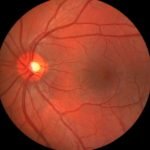Key Environmental Factors Impacting AANMC Members in the Next Five Years
David Schleich, PhD
This is the fourth of a four-part, catalytic series about CNME-based naturopathic medical education in North America.
There are those in the profession who may shudder to think that the larger terrain of North American higher education could adversely impact the hard-earned autonomy, quality and sustainability of the naturopathic colleges who are members of the AANMC (Association of Accredited Naturopathic Medical Colleges). As institutions and organizations linked to the mission of establishing naturopathic medicine in North America, AANMC members more frequently than before are conducting “environmental scans” as part of their long-term operational reviews and fiscal planning. During this expensive, complex process, a number of key factors crowd the radar screen.
AANMC members have not always had the luxury of planning as a group; nor do their governors and trustees gather as a group to assemble a continental strategy. There are, nevertheless, key environmental factors which are rushing toward us.
There is the inevitability of competition in our key program areas. This increasingly competitive challenge is coming from mainstream university and college programs, as well as from the private sector. The data demonstrate that public sector and private, for-profit organizations are rapidly expanding their CAM offerings because the business is there. In such an environment, some would counsel that reliance on traditional revenue sources from the core program of naturopathic colleges needs to be offset by the diversification of our programmatic base as soon as possible. This call to action, however, has to take into account concerns about diluting the mission of the naturopathic college if the institution focuses efforts on programs which do not have as their principle objective the graduating of well trained NDs.
Ironically, the diversifying of programs, particularly if they are strategically positioned so as to complement the core program, can enhance the higher education status of the institution. At the same time, though, outside accrediting bodies [other than the CNME] begin to have a say about the institution’s standards. The institution’s own credibility as a post-secondary institution with secular degree programs, however, will attract more research money, state/provincial and federal support in the form of access to certain types of one-off and multi-year funding, and a larger pool of qualified personnel.
Even as program diversification looms on the horizon, there is a parallel and critical need to establish resources to support institutional research, as distinct from naturopathic medical research. Institutional research involves a regular environmental scan capacity alluded to above, with one, three, five and ten year windows. The comprehensive, cumulative, routine review of the natural health sciences industry [manufacturing, services, research, professional practice], regulatory issues for the natural health care professions and for the corporations serving them, and data about the success rates of our graduates within those environments, are all part of the institutional research equation. This is not to be confused with academic and clinical research whose content is informed by naturopathic medical therapies, practice, materials and theories.
The current Foundations of Naturopathic Medicine Project spearheaded by Dr. P. Snider, is an example of a differentiated area of research, the codifying of naturopathic medical knowledge for purposes of building the profession and sharing its knowledge platform with the wider health care universe. In any case, prior to the more recent attention being paid to institutional research, there has been the urgency of a co-coordinated naturopathic medical research mission for the naturopathic profession in North America. However, even collectively the CNME accredited post-graduate naturopathic medical schools cannot mount and sustain a comprehensive research agenda; the future lies, then, in joint ventures, and inter-institutional collaboration [with other multi-program colleges and universities of natural medicine, and with respectful North American university faculties of medicine and allied health sciences].
Another poignant, related issue hinges on our having to decide whether we shall systematically require our teachers to imitate the dominant research university [Veblenian model, Flexner model] paradigm, or give priority to preparation of practitioners with related, but not prioritized, research activity.
These developments will increasingly be on the agenda even as the institutional and organizational maturing of AANMC members as post-secondary, higher education, degree granting institutions will be impacting on the long-term professional development of our faculty, and on our understanding of how the ND program fits into the multi-program offerings of the institution. There is little doubt, as these changes take shape, that there is an accompanying need to keep the naturopathic profession (and related, supportive professional groups) linked in a formal, systematic way to the core ND program in terms of an AANMC-wide network of advisory committee consultations about scope of practice curriculum content, regulatory transformation in terms of state/province and federal public policy and practice, and the growing attention of the schools to alumni operations.
Further, there is also the ongoing impact of degree accreditation on the institution’s accountability framework [as provincial/state and relevant federal expectations shift and transform, the role of the CNME also transforms in the life of the colleges]. There are concomitant implications for the credentials of our teachers, in that some post-diplomas and other professional trainings are, in turn, affected by the changing post-secondary and regulatory terrain (e.g. in British Columbia, Oriental Medicine is now regulated and the educational requirements for those practicing its therapies have as much relevance for Boucher as the CNME’s standards; in Ontario, the tension between the Ministry of Health and the Ministry of Training, Colleges and Universities over the different regulatory environment for NDs compared to MDs has long blocked the attribution of degree-granting status to CCNM).
In this rapidly transforming universe of higher education, we can expect that an ND degree will gradually be complemented by a terminal graduate degree with significant research training, in parallel to the practitioner’s degree currently offered by AANMC colleges. Indeed, such a credential will become the norm, in addition to the appropriate medical/clinical credential requirement, for those teaching in the core programs. Meanwhile, in the biomedical sciences curriculum which will span various program areas, ND teachers will more and more often be required uniformly to have a completed Ph.D. from an accredited institution with demonstrated evidence of an ongoing research program and publications. As well, all teachers will be asked increasingly to commit to developing strong skills in classroom and clinical education delivery and curriculum design. These developments, generally, will be occurring within the context of an inevitable evolution of AANMC members into multi-program universities of natural health sciences in which the training of NDs constitutes the lead program among at least a half-dozen others. This positioning will generate positive implications for the influence of naturopathic physicians on related complementary/alternative medical training for other health care professionals such as MDs, RNs, Nurse Practitioners, Homeopathic practitioners, Herbalists, Chiropractors, Acupuncturists and Traditional Chinese Medicine practitioners.
There is little doubt that the Canadian and American naturopathic medical colleges are poised to undertake a quantum leap. The Boards of Governors/Trustees of each of the colleges may wish to plan a first symposium of governors as an annual event, choreographed, say, to coincide with the annual AANP Conference. Its purpose would be to consider these factors as part of a normal review of progress of the AANMC members collectively, continent-wide. This body would have as its mandate a thorough look at the resources out there and the vision propelling their use.
There is no doubt that the demand for the services of ND graduates is growing steadily. It is the naturopathic profession’s turn to promote its educational foundations and leadership in the natural health sciences within the higher education sector. The traditional institutions which have controlled higher education in North America for so long now have some new neighbors. AANMC members are friendly. They’re ready. They are here to stay.
 David Schleich, President of Truestar Health Inc., is the former CEO and President of Canada’s accredited Canadian College of Naturopathic Medicine, where he served from 1996 to 2003. His previous posts have included an appointment as Vice President Academic of Niagara College, and administrative and teaching posts at St. Lawrence College, Swinburne University (Australia) and the University of Alberta. He was also the publisher/editor of Quarry Press, one of Canada’s pioneering literary publishers and is the current editor of Truestar Press, focused on health topics.
David Schleich, President of Truestar Health Inc., is the former CEO and President of Canada’s accredited Canadian College of Naturopathic Medicine, where he served from 1996 to 2003. His previous posts have included an appointment as Vice President Academic of Niagara College, and administrative and teaching posts at St. Lawrence College, Swinburne University (Australia) and the University of Alberta. He was also the publisher/editor of Quarry Press, one of Canada’s pioneering literary publishers and is the current editor of Truestar Press, focused on health topics.










